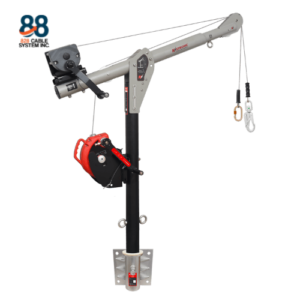Confined spaces aboard cargo ships present unique challenges for safety and require meticulous planning and preparation. These areas, such as boilers, tanks, cargo holds, and void spaces, are characterized by restricted access, lack of natural ventilation, and are not intended for continuous occupancy. Ensuring the safety of personnel working in these confined spaces is paramount to prevent accidents and ensure compliance with maritime safety regulations.
Understanding Confined Spaces
Confined spaces on cargo ships refer to areas that are enclosed and have limited access points. These spaces include boilers, pressure vessels, various tanks (cargo, ballast, fuel oil, lubricating oil), cargo holds, and other similar enclosures. The confined nature of these spaces poses significant risks to health and safety due to factors such as limited escape routes, potential for hazardous atmospheres, and difficulty in communication and rescue operations.
It is crucial for maritime personnel to understand the specific hazards associated with each confined space onboard. Regulations, such as those outlined by the International Maritime Organization (IMO) and national maritime authorities, provide guidelines for identifying and managing risks in confined spaces.
Key Safety Measures
Risk Assessment: Before entering a confined space, a thorough risk assessment must be conducted. This assessment should identify potential hazards such as toxic gases, lack of oxygen, or physical hazards like confined movement or difficult access points. By understanding these risks, appropriate control measures can be implemented to mitigate them.
Preventive Measures: Preventive measures are essential to control hazards before they become risks. These measures include adequate ventilation of confined spaces, testing and monitoring of atmospheric conditions, and implementing procedures for safe entry and work. It is crucial to prioritize these controls over reliance on Personal Protective Equipment (PPE), which should be considered a last line of defense.
Emergency Preparedness: Effective emergency preparedness is critical in confined spaces where evacuation and rescue can be challenging. Emergency procedures should include clear communication protocols, designated rescue teams, and equipment such as communication devices and rescue harnesses readily available. Regular drills and training sessions ensure that crew members are prepared to respond swiftly and safely in case of emergencies.
Essential Safety Gear
Personal Protective Equipment (PPE): PPE plays a crucial role in protecting personnel working in confined spaces. Depending on the specific hazards identified in the risk assessment, appropriate PPE may include respiratory protection (e.g., respirators or self-contained breathing apparatus), protective clothing, helmets, gloves, and safety harnesses for fall protection.
Accessories and Equipment: Accessories and specialized equipment are essential for safe entry and work in confined spaces. Ventilation equipment helps maintain breathable air quality, while gas detectors and atmospheric monitoring devices continuously monitor conditions for potential hazards. Communication devices, including radios or handheld devices, enable constant contact between personnel inside and outside the confined space.
Best Practices for Crew and Surveyors
Training and Awareness: Comprehensive training programs are crucial for crew members and surveyors who may need to enter confined spaces. Training should cover hazard recognition, proper use of PPE and equipment, emergency procedures, and safe work practices. Regular refresher courses and drills ensure that skills and knowledge remain current and effective.
Roles and Responsibilities: Clear delineation of roles and responsibilities is essential for effective safety management in confined spaces. Ship crew members should understand their roles in implementing safety protocols, while surveyors and safety officers oversee compliance with regulations and ensure that all necessary precautions are in place before work commences in confined spaces.
Takeaway
Navigating safety in confined spaces on cargo ships requires a comprehensive approach that integrates risk assessment, preventive measures, and the use of appropriate safety gear. By prioritizing safety protocols and ensuring compliance with maritime regulations, ship operators can minimize risks and create a safer working environment for their crew.
Safety in confined spaces is not just a regulatory requirement but a fundamental aspect of maritime operations that protects lives and enhances operational efficiency. By investing in training, equipment, and proactive safety measures, maritime organizations demonstrate their commitment to safeguarding personnel and achieving operational excellence.
For more information on confined space safety guidelines and regulations, consult relevant maritime authorities and safety organizations. By staying informed and proactive, we can collectively improve safety standards across maritime industries.











